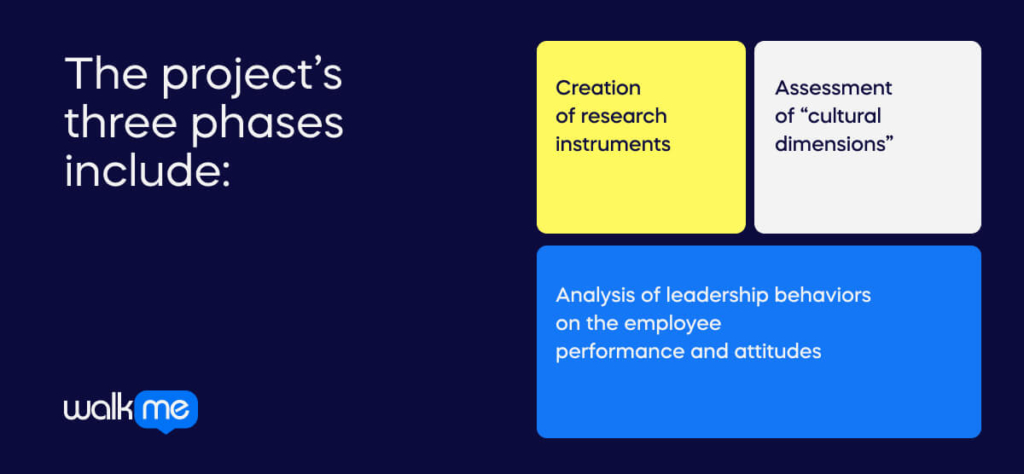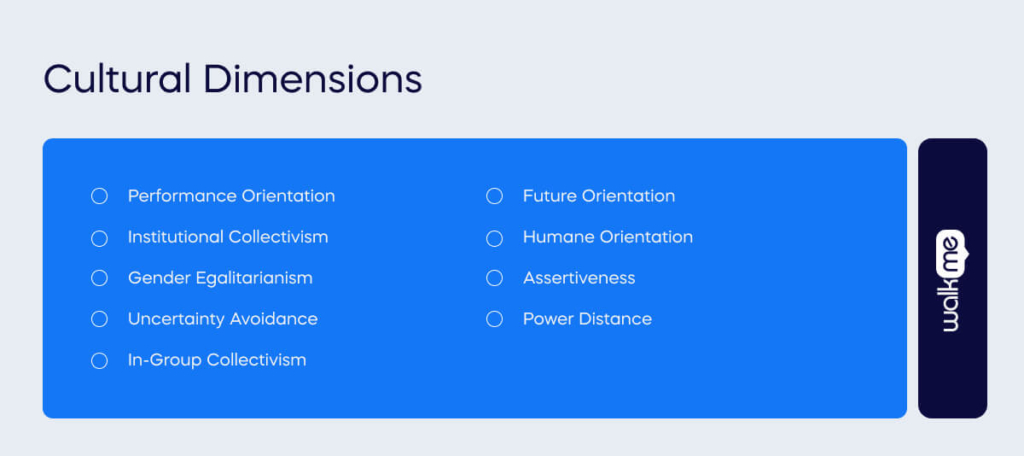What is the Global Leadership and Organizational Behavior Effectiveness Research Program (GLOBE)?
In this article, we’ll explore the basics of this vast research program, including:
- What GLOBE is
- How the research was structured
- Its implications for leaders, managers, and business professionals
This expansive research project is groundbreaking and important to any leader who wants to become a better leader, grow their business, or understand cross-cultural leadership.
Let’s get started with the fundamentals – the basics of the program and how it is structured.
The Global Leadership and Organizational Behavior Effectiveness Research Program (GLOBE)
As the name of the study suggests, GLOBE focuses on leadership.
More specifically, it is a cross-cultural, global study that examined organizational leadership’s effectiveness across multiple societies, cultures, and countries.
The project began in 1991 by Robert J. House at the University of Pennsylvania, and its first book-length report was published in 2004 – Culture, Leadership, and Organization: The GLOBE Study of 62 Societies.
That survey was conducted with the help of 170 co-researchers in 62 “societies” (grouped into 10 “societal clusters”) and a group of 14 coordinators and research associates.
The project’s three phases include:

- Creation of research instruments
- Assessment of “cultural dimensions”
- Analysis of leadership behaviors on the employee performance and attitudes
Below, we will look at some of these phases in more detail.
The 10 Culture Clusters
The 10 culture clusters, or societal clusters, included:
- Confucian Asia
- Southern Asia
- Latin America
- Nordic Europe
- Anglo
- Germanic Europe
- Latin Europe
- Sub-Saharan Africa
- Eastern Europe
- Middle East
Each of these was composed of several of the 62 aforementioned societies, which were usually geographic locations.
Nordic Europe, for instance, included Denmark, Sweden, and Finland.
As one might expect, the cultural similarities and leadership preferences were greatest within each cluster.
However, as we will soon see, a main aim of the research project was to transcend these cultural differences and common dimensions of culture and global leadership.
Cultural Dimensions

Early on, the researchers chose to address and establish measurement standards, in order to create a set of cultural dimensions, or “independent variables.”
These dimensions included:
- Performance Orientation – How groups encourage and reward members for improving and excelling
- Institutional Collectivism – How societal and institutional practices encourage collective action and the collective distribution of resources
- Gender Egalitarianism – How a group minimizes gender inequality
- Uncertainty Avoidance – How groups depend on rules, procedures, and social norms to cope with the future uncertainties
- In-Group Collectivism – How proud, loyal, and cohesive people are in regards to their families or organizations
- Future Orientation – Forward-thinking behaviors, such as planning and future investments
- Humane Orientation – How groups reward individuals for fairness, altruism, and similar behaviors
- Assertiveness – How confrontational, aggressive, and assertive people are with their peers
- Power Distance – How equally a group expects power to be distributed
These cultural dimensions can be thought of as and measured on a scale between two extremes.
Assertiveness, for instance, could be measured as “greatly non-assertive” on one end and “greatly assertive” on the other.
Two sides of these dimensions were analyzed:
- Practices – How these dimensions manifested themselves in reality
- Values – Which ones people valued
Finally, these dimensions – and their practices and values – were examined both in the context of the larger society and within individual organizations.
Universal vs. Societal
One of the primary interests of the researchers was the universality of leadership values – that is which aspects of leadership were independent of culture.
That is, researchers asked whether and which values were present worldwide, and which were specific to certain cultures.
After surveying the 17,300 respondents in the project, they were able to distill these results into a set of 21 common “leadership dimensions”:
- Administratively Competent
- Autocratic
- Autonomous
- Charismatic / Visionary
- Charismatic / Inspirational
- Charismatic / Self-Sacrificial
- Conflict Inducer
- Decisive
- Diplomatic
- Face Saver
- Humane Orientation
- Integrity
- Malevolent
- Modesty
- Non-Participative
- Performance Oriented
- Procedural
- Self-Centered
- Status Consciousness
- Team Collaborative
- Team Integrator
To generate these dimensions, researchers would pose questions about a set of attributes – such as “orderly,” “communicative,” or “informed.”
Each of the above “leadership dimensions” was composed of several such attributes and were seen as having a large influence on a leader’s ability.
GLOBE’s 6 Global Leadership Dimensions
The GLOBE identified six global leadership dimensions, or culturally endorsed leadership theory dimensions.
These were considered reflective of how “people worldwide distinguish between leaders who are effective and ineffective.”
Each of the six “global leadership dimensions” was comprised of multiple “primary leadership dimensions.”
For instance:
- Team oriented was composed of team collaborative, team integrative, diplomatic, malevolent (reverse-scored), and administratively competent
- Participative was composed of autocratic (reverse-scored) and non-participative (reverse-scored)
- Humane oriented was composed of modesty and humane oriented
These six dimensions – along with all of the other aspects of the GLOBE research program – are explained in depth in the GLOBE books.
Conclusion: Why the GLOBE Project Matters for Leaders
Leadership is elusive and it is difficult to find a universally accepted concept of “great leadership.”
Different cultures, organizations, and individuals each have their own opinion on the matter.
This is what makes this research program so interesting.
The GLOBE project explores and analyzes leadership characteristics across a wide range of societies, cultures, and organizations, rather than focusing exclusively on a single culture or country.
This makes its findings very relevant and instructional for any leader, regardless of their location, cultural background, or industry.

